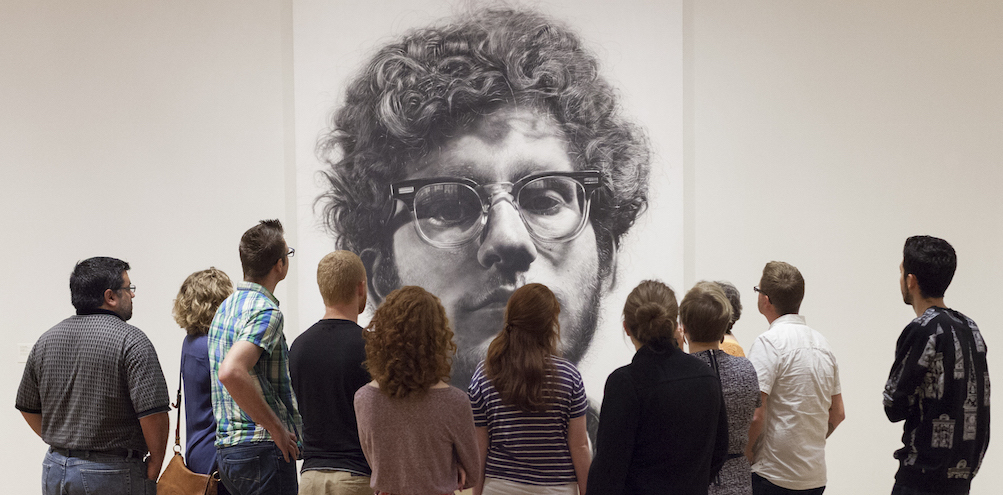Art World
Does Art Breed Empathy? This Museum Just Got $750,000 to Find Out
The Minneapolis Institute of Art is establishing the world's first Center for Empathy and the Visual Arts.

The Minneapolis Institute of Art is establishing the world's first Center for Empathy and the Visual Arts.

Sarah Cascone

If art gives you all the feels, a new initiative is promising to find out why. On the strength of a $750,000 grant from the Andrew W. Mellon Foundation, the Minneapolis Institute of Art is establishing the world’s first Center for Empathy and the Visual Arts.
The center’s goal, said museum president and director Kaywin Feldman in a statement, is to learn “how to spark and nurture empathy through the visual arts, so that MIA and all art museums can contribute even more toward building a just and harmonious society.”
MIA has mapped out a five-year initiative for the center, according to the Minneapolis Star Tribune. The museum will enlist everyone from researchers, scholars, and philosophers to artists, thought leaders, and content experts to determine how museums can help their audiences develop compassion and become more emotionally intelligent.
“A visitor to our museum has the opportunity to experience works of art made over the course of some 5,000 years, from every corner of the globe,” added Feldman. “One of the most meaningful aspects of this encounter is the awareness it can awaken of a common humanity—an immediate sense of connection between the viewer and someone who may have lived in a very different time and place.”
Speaking to artnet News, Feldman pointed out that while empathy has always existed, our contemporary understanding of it derives from the work of 19th-century German physiologist and philosopher Wilhelm Wundt. “He coined the German term, literally translated as ‘feeling into,’ to describe what happens when a human looks at a work of art and projects emotion onto a physical object,” she explained. “Our understanding of empathy actually blossomed through the visual arts.”
The new empathy center is run in partnership with the Berkeley Social Interaction Lab at the University of California, Berkeley. The museum approached lab director and psychology professor Dacher Keltner, also co-director of the university’s Greater Good Science Center, after reading his work on empathy.
“Dr. Keltner found that when we experience wonder, we become more altruistic and less focused on ourselves. We feel greater connection through humanity,” said Feldman, noting that MIA’s vision statement is “inspiring wonder through the power of art.”
“Aesthetic experiences—in viewing a painting, sculpture, photograph, or dance, or in music—are sources of awe and wonder,” said Keltner in a statement. “They enable us to solve a complex mystery—to understand what our fellow humans think and feel. For these reasons, the museum may be one of the great catalysts of human empathy and compassion.”
The two institutions kicked off their efforts in October, inviting a group of 12 museum professionals along with thought leaders like a neuroscientist, a historian, and a Google representative, to take part in a think tank at the school. “They all studied empathy, but from different angles,” said Feldman, noting that she had been to a lot of museum conferences with panels about empathy but had never tackled it head on.
The first phase of the project aims to develop and test ways that museums can help promote empathy among visitors. The hope is to create tools that will be utilized by other institutions around the world for the same ends. The museum plans to publish its findings and hold conferences on the topic.
As part of the research, visitors to the museum will have their empathy measured upon arrival and again when they are leaving. “Certain human beings are born with a greater propensity toward empathy, but empathy can be taught, and it’s something art museums can help do,” said Feldman.
“One way to bridge gaps and foster greater understanding is through storytelling,” she added. “Our objects all tell stories because they’re about people. We believe profoundly that works of art are an expression of the human lived experience and can play a vital role in helping people understand each other in our increasingly connected and yet fragmented world.”
The museum has also received a $520,000 grant from the Ford Foundation and the Walton Family Foundation for the museum’s ongoing Inclusion, Diversity, Equity, and Accessibility (IDEA) initiative.